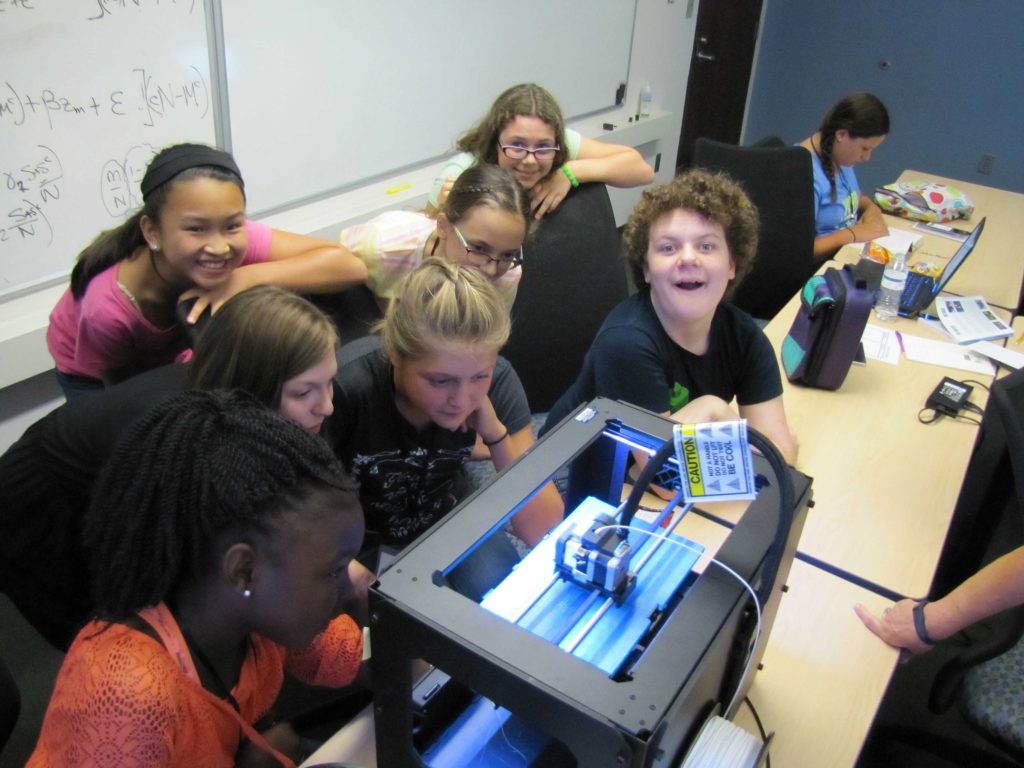As a part of the US President’s Office of Science Technology and Policy’s Active Learning Day, which is celebrated today, Oct. 25, NIMBioS is pleased to announce the release of a new 3-D printing educational module aimed for middle school learners.
Access to 3-D printing has been a growing trend in K-12 schools. NIMBioS’ hands-on module features active learning using 3-D printing technology to teach middle school students about physical scientific models and cell organelles. The activity has already proven a success over the years at NIMBioS’ “Adventures in STEM Camp” for middle school girls, and now the instructions for this activity are available for teachers.
In this curriculum module, aligned with Next Generation Science Standards, students learn about physical models and how they are used in science, then design and print their own representations of different cell organelles or flowers. The activity follows the 5E instructional model. Full details about the module, including information on required materials and a pdf handout for teachers, are available at https://legacy.nimbios.org/education/3dprinting_module
Active learning is the process of putting students at the center of their educational experience, where teachers assume a supportive and guiding role. Active learning has been shown to increase student engagement and achievement. OSTP declared October 25, 2016 “Active Learning Day” to inspire educators to incorporate more active learning in their classroom. According to OSTP’s blog, “On this day, STEM educators at all grade levels, from K-12 through college and university, are encouraged to spend at least 10 minutes using an active learning technique in their classrooms. Implementing active learning can be as simple as using small group discussions for problem-solving, asking students to write down a question they have following a lesson, or allowing time for self-assessment and reflection by the students; it also can be as expansive as hands-on technology activities or engaging students in authentic scientific research or engineering design.”
NIMBioS’ 3-D printing activity joins a suite of other educational modules that promote active learning at the interface of math and biology collected on the NIMBioS Education Module Page. All of these activities were developed at NIMBioS in support of various outreach activities.

